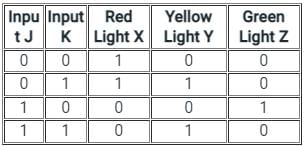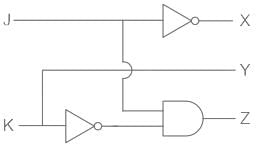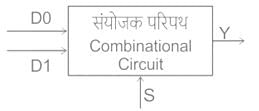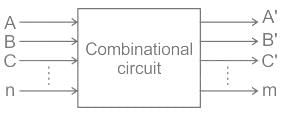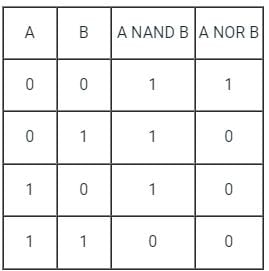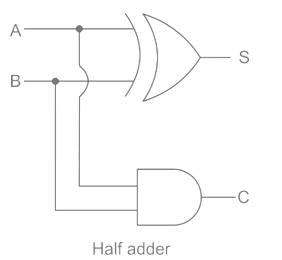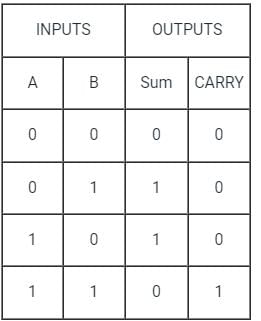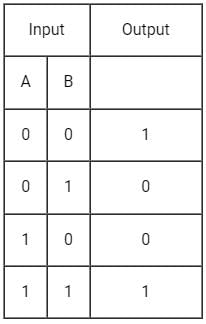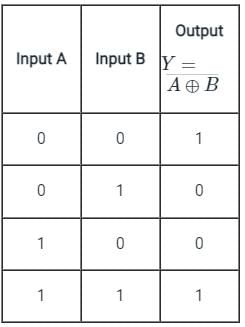Electrical Engineering (EE) Exam > Electrical Engineering (EE) Tests > Test: Combinational Logic Circuits - Electrical Engineering (EE) MCQ
Test: Combinational Logic Circuits - Electrical Engineering (EE) MCQ
Test Description
10 Questions MCQ Test - Test: Combinational Logic Circuits
Test: Combinational Logic Circuits for Electrical Engineering (EE) 2025 is part of Electrical Engineering (EE) preparation. The Test: Combinational Logic Circuits questions and answers have been prepared
according to the Electrical Engineering (EE) exam syllabus.The Test: Combinational Logic Circuits MCQs are made for Electrical Engineering (EE) 2025 Exam.
Find important definitions, questions, notes, meanings, examples, exercises, MCQs and online tests for Test: Combinational Logic Circuits below.
Solutions of Test: Combinational Logic Circuits questions in English are available as part of our course for Electrical Engineering (EE) & Test: Combinational Logic Circuits solutions in
Hindi for Electrical Engineering (EE) course.
Download more important topics, notes, lectures and mock test series for Electrical Engineering (EE) Exam by signing up for free. Attempt Test: Combinational Logic Circuits | 10 questions in 30 minutes | Mock test for Electrical Engineering (EE) preparation | Free important questions MCQ to study for Electrical Engineering (EE) Exam | Download free PDF with solutions
Test: Combinational Logic Circuits - Question 1
A combinational logic circuit for traffic control is designed. ___________ GATE can only be used to implement the designed control circuit without any additional GATES.
Detailed Solution for Test: Combinational Logic Circuits - Question 1
Test: Combinational Logic Circuits - Question 2
In the figure shown, D0 and D1 are digital inputs, S is a control input and Y is the output. When S = 0, then Y = D0. When S = 1, then Y = D1. The given combinational circuit is
Detailed Solution for Test: Combinational Logic Circuits - Question 2
Test: Combinational Logic Circuits - Question 3
_______ are an example of a combinational circuit.
Detailed Solution for Test: Combinational Logic Circuits - Question 3
Test: Combinational Logic Circuits - Question 4
Any combinational circuit can be designed using only
Detailed Solution for Test: Combinational Logic Circuits - Question 4
Detailed Solution for Test: Combinational Logic Circuits - Question 5
Test: Combinational Logic Circuits - Question 6
Number of 2 × 1 Multiplexers are required to implement 64 × 1 Multiplexers
Detailed Solution for Test: Combinational Logic Circuits - Question 6
Detailed Solution for Test: Combinational Logic Circuits - Question 7
Test: Combinational Logic Circuits - Question 8
In a 1 to 4 De-multiplexer, how many select input lines are required?
Detailed Solution for Test: Combinational Logic Circuits - Question 8
Detailed Solution for Test: Combinational Logic Circuits - Question 9
Test: Combinational Logic Circuits - Question 10
What determines the output from the combinational logic circuit in Digital Electronics?
Detailed Solution for Test: Combinational Logic Circuits - Question 10
Information about Test: Combinational Logic Circuits Page
In this test you can find the Exam questions for Test: Combinational Logic Circuits solved & explained in the simplest way possible.
Besides giving Questions and answers for Test: Combinational Logic Circuits, EduRev gives you an ample number of Online tests for practice
Download as PDF


